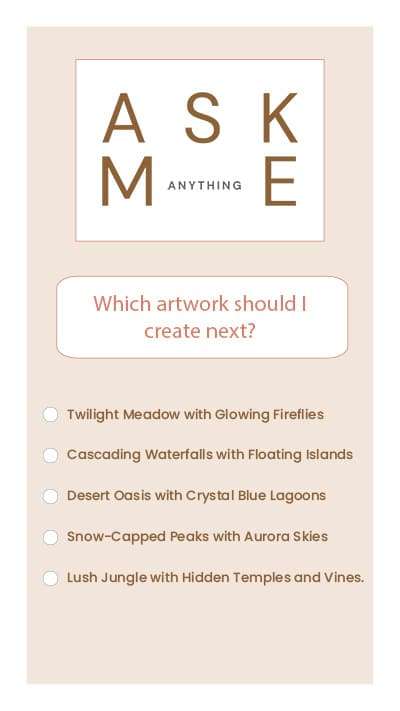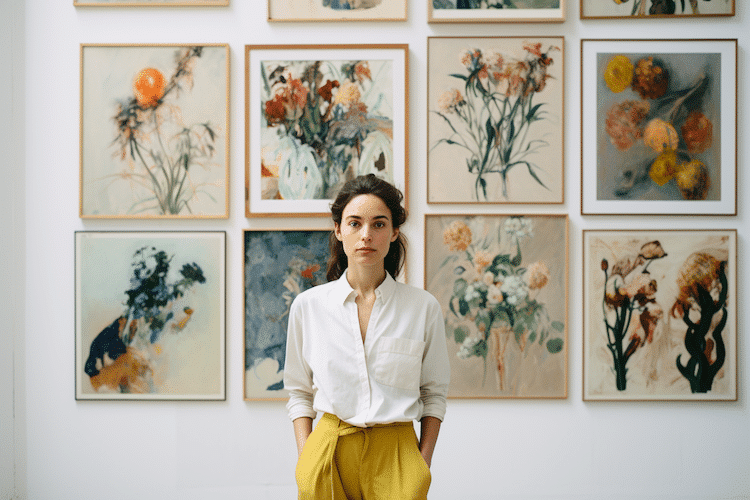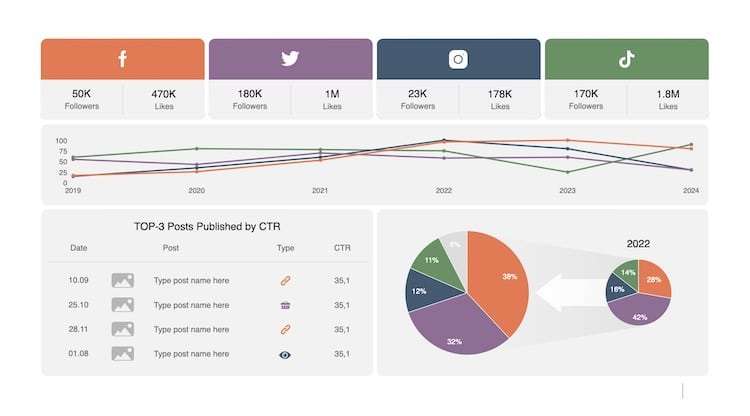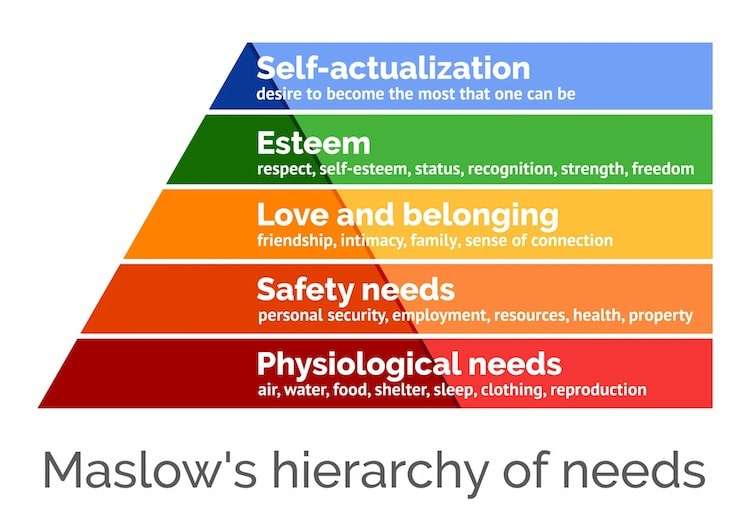Part 4 of the Building a Better Online Profile Series.
Social media for artists has become a game-changer. Platforms like Instagram, Twitter, and Pinterest have evolved into modern canvases, enabling artists to showcase their masterpieces and engage with a global audience. But as these platforms burgeon with content from so many artists, how can an artist truly carve a niche?
The answer lies in engaging your potential audience with more than your art. The number of followers or likes shouldn’t define success in social media. Instead, you should focus on forging genuine connections and meaningful engagements that make you memorable.
It’s all about keeping your potential customers engaged with continual content that keeps the audience interested so that when it is time for them to purchase or hire someone for a project, you will be the one they turn toward. This article delves into advanced tactics, ensuring artists shine amidst the digital noise and gain a competitive edge.
Advanced Social Media Engagement Techniques
Most artists are familiar with using social media to promote themselves. It’s the go-to tactic for promoting creative works. Still, the true challenge lies in navigating the algorithms that ensure you reach the intended audience with a continuous stream of content that they find helpful and exciting.
To truly harness the power of these platforms, artists must move beyond traditional engagement methods and find strategies that can break through the thousands of other artists vying for the audience’s attention. Below we look at a few techniques to elevate your digital presence and position yourself as an expert at your craft.
Crafting Meaningful Digital Touchpoints with Micro-Interactions
Micro-interactions are the subtle, often unnoticed details that can profoundly elevate user experience. A micro-interaction is a specific task-oriented action, such as reacting to a post, answering a poll, or observing the animation during a feed refresh. For visual artists, these details are crucial.

A prime example of micro-interactions that artists can utilize to involve their audience in the creative process.
Micro-interactions can make the digital space more human, where the audience feels they are interacting with you, not the algorithm. They transform passive consumption into active participation.
For instance, an artist might post a close-up of a section of their artwork and ask followers to guess the broader theme or the emotions conveyed. Now the audience members aren’t just looking at a finished work but can feel involved in the artistic process, creating anticipation to see the final work.
Implementing micro-interactions is generally straightforward. Platforms like Instagram offer many tools, from polls and questions to countdowns and quizzes. If you’ve just completed a piece, you can use a slider to let followers indicate how much they love it. You can run a poll to see which of your work they like the most, helping you decide the direction you should take on your next piece. Instantaneous feedback can provide invaluable insights into audience preferences and perceptions that may help you give the audience what they want, leading to more sales or projects.
For example, imagine a painter, Leo, known for his dream-like fanciful landscapes. He is considering a new piece inspired by the ocean but he can’t decide whether to set his piece in the illuminating light of the blazing sun or create a more melancholy piece set at night where the moon casts its otherworldly glow.
Instead of deciding himself, he posts snippets of both versions on his Instagram story, using the ‘Poll’ feature to let his followers decide. Within hours, hundreds have voted, with many leaving comments explaining their choices. Leo gets clarity on his piece and engages his audience in his creative process, making them feel valued and involved. The final artwork, with the chosen element, becomes a collaborative masterpiece, and Leo’s followers eagerly await its reveal, knowing they played a part in its creation.
Weaving Narratives in the Digital Realm
Since the dawn of humanity, we gathered around fires to share tales. That innate love for storytelling has evolved over millennia, manifesting today in blockbuster movies, captivating TV shows, and enthralling novels. We are, intrinsically, a species drawn to entertainment and compelling narratives.
From the fireside tales of ancient times to the captivating narratives of today’s digital platforms, storytelling remains intrinsic to our nature. While visual artists inherently convey stories through artwork, social media offers a broader canvas. Beyond displaying their creations, artists can weave narratives, share behind-the-scenes moments, and offer insights into their artistic processes. This expanded storytelling capability allows them to draw audiences deeper into their world, offering a richer understanding of their craft and vision.
Social media platforms understand this and provide users with various tools to help build compelling stories. For example, Instagram and Facebook have stories to create video content or carousels that offer artists a sequential format to narrate their journey. Even standard posts can be used like a serialized graphic novel, with each post revealing a bit more about the artwork. Utilizing social media for artists offers a distinct advantage; their expertise in crafting captivating visuals allows them to stand out amid the vast sea of content.
Storytelling through art brings the artist’s persona to the forefront, offering a glimpse into their world. By sharing personal tales, artists bridge the gap between themselves and their audience in an era where online exchanges sometimes seem impersonal. This transparency cultivates a more profound appreciation among followers. When they grasp the narrative behind an artwork, they become more inclined to share, discuss, and resonate with it.

In the realm of digital narratives, every artwork is a chapter, and every artist a storyteller.
Leveraging User-Generated Content for Authenticity
One of the most potent tools in an artist’s social media arsenal is the content created by their audience. User-Generated Content (UGC) is any form of content, like photos, videos, testimonials, tweets, and more, posted by users on online platforms. For artists, this can be a goldmine of authentic interactions and endorsements.
When followers share their experiences with an artist’s work, it adds a layer of authenticity that’s hard to replicate with branded content. It’s a genuine endorsement, a testament to the artwork’s impact on an individual. And in social media for artists, where trust is paramount, UGC can be a game-changer.
Artists can encourage their followers to share photos of purchased artwork in their homes, write about their interpretations of a piece, or even create their art inspired by the artist’s work. These personal touches provide fresh content for the artist’s social media channels and foster a sense of community and belonging among followers.
For example, a ceramic artist could run a monthly challenge where buyers share unique ways of using the artist’s pieces in their daily lives. Whether it’s a mug in their morning coffee routine or a vase in their living room, these real-world applications can inspire others to see the value and versatility of the artist’s work.
By showcasing UGC, artists celebrate their community and build a repository of genuine testimonials and endorsements, making their social media platforms more relatable, trustworthy, and vibrant.
Social Media For Artists Success Lies in Harnessing Data and Analytics
Every interaction on social media, from a simple like to a detailed comment, generates data. This data provides invaluable insights into audience behavior, preferences, and engagement patterns when harnessed correctly. For artists, it’s not just about knowing how many people viewed or liked a post. It’s about understanding the ‘why’ behind those numbers. Did a particular artwork resonate more with the audience? Was there a spike in engagement when posting at a specific time? These are the questions that data and analytics can answer, allowing artists to tailor their content strategy with precision.
Navigating the analytics section of popular social media platforms can initially seem daunting, but it’s more straightforward than one might think. Most platforms, like Instagram, Facebook, or Twitter, have dedicated ‘Insights’ or ‘Analytics’ sections accessible via the profile or settings page. Once inside, artists are presented with a dashboard teeming with data. Beyond the basic likes, shares, and comments metrics, these dashboards offer deeper insights.
They can show the types of content driving the most website visits, the duration people spend viewing a post or story, and even the actions taken after viewing, such as visiting the artist’s profile or website. There are also data on the age, gender, and location of the audience, which can be pivotal for artists aiming to target a specific demographic. Furthermore, metrics like ‘reach’ and ‘impressions’ can give an idea of how far and wide the content is spreading.
While follower count or likes can provide a snapshot, they don’t paint the complete picture. Delving deeper into metrics like audience demographics, peak interaction times, and engagement rate can offer a more holistic view.

The artist’s digital dashboard: Where creativity meets data-driven insights.
By aligning your content with audience insights, you’re not merely aiming for likes or shares but building a community; one that looks forward to your posts values your perspective, and is more likely to invest in your art. Whether your goal is to sell more pieces, get commissioned for projects, or simply grow your digital presence, understanding and acting on audience behavior is the key. It’s the difference between being just another artist on social media and being a recognized, respected voice in the art community.
Understand the Psychology of Nurturing Followers and Fans
Human beings, by nature, are driven by their relationships and personal attachments. Throughout history, our survival and progress have been rooted in our ability to form cohesive groups and communities. For artists, these groups often manifest as dedicated followers and admirers on social media platforms. By delving into the psychological motivations of these followers and fans, artists can build stronger, more profound bonds than with casual observers of their work.
Several psychological principles highlight the power of these bonds.
- Maslow’s Hierarchy of Needs: Maslow identifies ‘belongingness and love’ as a core human requirement, positioned just after essential physiological and safety needs. This intrinsic desire for belonging propels individuals to gravitate towards spaces and communities where they feel recognized, cherished, and integrated.
- The Theory of Cognitive Dissonance (Leon Festinger): This theory posits that people have an inner drive to hold all their beliefs and attitudes in harmony and avoid disharmony (or dissonance). Artists can use this to their advantage by creating art that challenges prevailing beliefs or norms, prompting viewers to reconcile their feelings and beliefs. This can lead to deeper engagement as viewers reflect on the artwork and its message.
- Reciprocity Principle: People tend to return favors, hence the importance of giving to receive. Artists can offer insights, behind-the-scenes looks, or even free digital prints. In return, followers may feel more inclined to support the artist, whether through purchases, shares, or other forms of support.
- Endowment Effect: People tend to value things more highly simply because they own them. Artists can leverage this by offering limited edition prints or exclusive content for their followers, making them feel a unique connection to the art.
- The Baader-Meinhof Phenomenon (Frequency Illusion): After noticing something for the first time, one tends to notice it more often. Artists can create series or themes in their work, making it more recognizable and top-of-mind for their audience.
- Social Proof: People tend to do what they see others doing. By showcasing testimonials, reviews, or pictures of others enjoying their art, artists can encourage more people to engage with and purchase their work.
- The Zeigarnik Effect: People remember uncompleted tasks better than completed ones. Artists can use this to their advantage by sharing works in progress or teasing upcoming projects, keeping their audience in eager anticipation.
- Loss Aversion: The pain of losing is psychologically about twice as powerful as the pleasure of gaining. Limited-time offers, limited edition prints, or highlighting the uniqueness of a piece can make followers more inclined to purchase or engage, fearing they might miss out.
By understanding and integrating these psychological principles into social media for artists can foster a deeper, more meaningful relationship with their audience, driving both engagement and support.

Maslow’s hierarchy illustrates the deep human desire for connection, a vital insight for artists navigating social media
Drawing from these psychological insights, artists can craft strategies that resonate deeply with their audience’s innate desires. Prioritizing authenticity, inclusivity, and open dialogue becomes paramount. Sharing personal stories, challenges, and inspirations not only humanizes the artist but also mirrors the universal human experiences that followers can relate to. Encouraging followers to share their interpretations and experiences related to the art can further transform an artist’s platform into a collaborative space. This approach, deeply rooted in our understanding of human needs and behaviors, ensures that an artist’s social media presence evolves from mere visibility to a space of mutual appreciation and shared experiences.
________
Artists face challenges and opportunities in the dynamic landscape of art and digital platforms. The key to thriving isn’t just about mastering the brush or chisel and understanding the nuances of digital interactions. An artist’s journey in the digital age is akin to painting on a vast canvas, where every stroke is influenced by audience insights, deep community connections enrich every hue, and every artwork tells a story that transcends pixels and resonates with human emotions.
As artists continue to explore this digital frontier, it’s essential to remember that a human being is at the heart of every interaction, seeking connection, understanding, and inspiration. By embracing advanced strategies and grounding them in genuine human interactions, artists can showcase their masterpieces and build lasting relationships, ensuring their art leaves an indelible mark in the digital gallery of the world.
